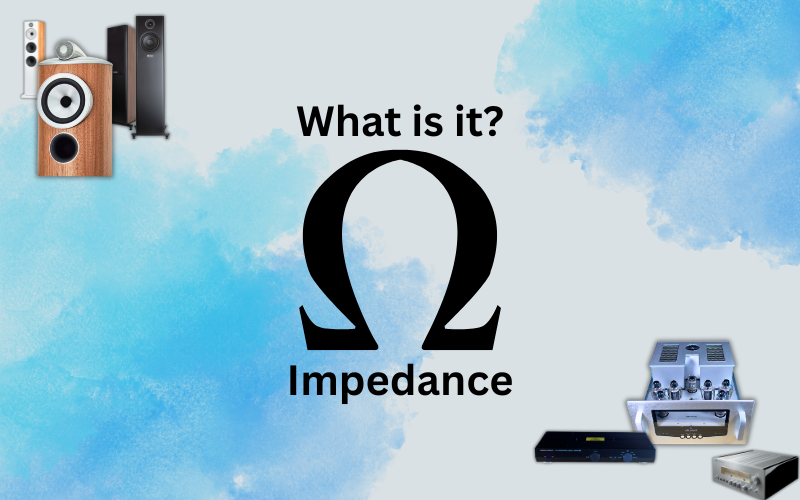Speaker Impedance and your Your Hi-Fi: Why does it matter?
Speaker impedance in your Hi-Fi refers to the resistance a speaker offers to the electrical current and voltage supplied by an amplifier.

Measured in ohms (symbolised by the Greek letter Ω), impedance is a critical factor in the performance of your hi-fi or home theatre audio system.
Understanding impedance is essential for pairing your speakers with a compatible amplifier or receiver to optimise sound quality and prevent equipment damage.
A speaker’s impedance varies with the frequency of the audio signals it produces. Most home audio equipment is designed with a standard nominal impedance rating, typically 8 ohms, though speakers are also available in 4, 6, or 16 ohms. Knowing how these ratings impact sound quality is vital for hi-fi enthusiasts.
Impedance is a complex concept, combining resistance (a direct current characteristic) with reactance (an alternating current characteristic). This means impedance can fluctuate with different audio frequencies, making it a key consideration when designing or setting up your audio system.
Speaker Impedance and your Your Hi-Fi: How does this Affect your Sound Quality
A common misconception is that higher impedance automatically means better sound quality. In reality, the relationship is more nuanced. Impedance affects how efficiently an amplifier drives a speaker. If the impedance is too high or too low, it can strain the amplifier, compromising sound quality. An amplifier must be designed to handle the speaker’s impedance to deliver clear, undistorted audio.
An impedance mismatch can lead to poor sound quality, causing issues such as reduced dynamic range, increased distortion, or even damage to the amplifier or speakers. For example, an amplifier designed for an 8-ohm load may struggle to drive a 4-ohm speaker, resulting in suboptimal audio reproduction. Here’s why:
- A 4-ohm speaker draws more current than an 8-ohm speaker, potentially overworking an amplifier not designed for the increased load, leading to compromised audio quality.
- This strain can cause clipping, where the amplifier fails to supply sufficient power, resulting in harsh, distorted sound with reduced clarity and fidelity.
Conversely, if the impedance is too high for the amplifier, the volume and dynamic range may suffer, making the audio feel flat. The ideal impedance match ensures maximum power transfer from the amplifier to the speakers, delivering a richer, more detailed sound experience. Therefore, matching components with compatible impedance ratings is crucial when setting up your hi-fi system.
Speaker Impedance and your Your Hi-Fi: Choosing the Right Amplifier for Your Speakers
Selecting the right amplifier for your speakers goes beyond matching power outputs. You must consider impedance ratings to ensure the amplifier can deliver power efficiently without strain. When choosing an amplifier, review its supported impedance range and output wattage at those levels, typically found in the product specifications. For personalised guidance, our expert team at our showroom can assist you in selecting the perfect amplifier for your setup.
Amplifiers often deliver higher wattage to lower impedance loads. For instance, a 6-ohm speaker may receive more power than an 8-ohm speaker from the same amplifier, potentially producing louder sound. However, care must be taken to avoid overloading the amplifier. When using multiple speakers, consider the total impedance load, as wiring in series or parallel can alter the overall impedance, affecting the amplifier’s performance.
Speaker Impedance and your Your Hi-Fi: Summarising
Speaker impedance measures the resistance to electrical current, playing a pivotal role in achieving exceptional audio performance. Common impedance ratings include 4, 6, 8, and 16 ohms, and matching these with amplifiers is essential. A mismatch can lead to distortion, reduced sound quality, or even equipment damage.
By understanding and managing impedance, you can create a hi-fi setup that delivers immersive, high-fidelity sound.
Ready to elevate your audio experience? Visit our showroom in Lane Cove to experience our range of amplifiers and speakers firsthand and let our experts help you craft the ultimate hi-fi setup!
Regards,
The Team at Len Wallis Audio.





